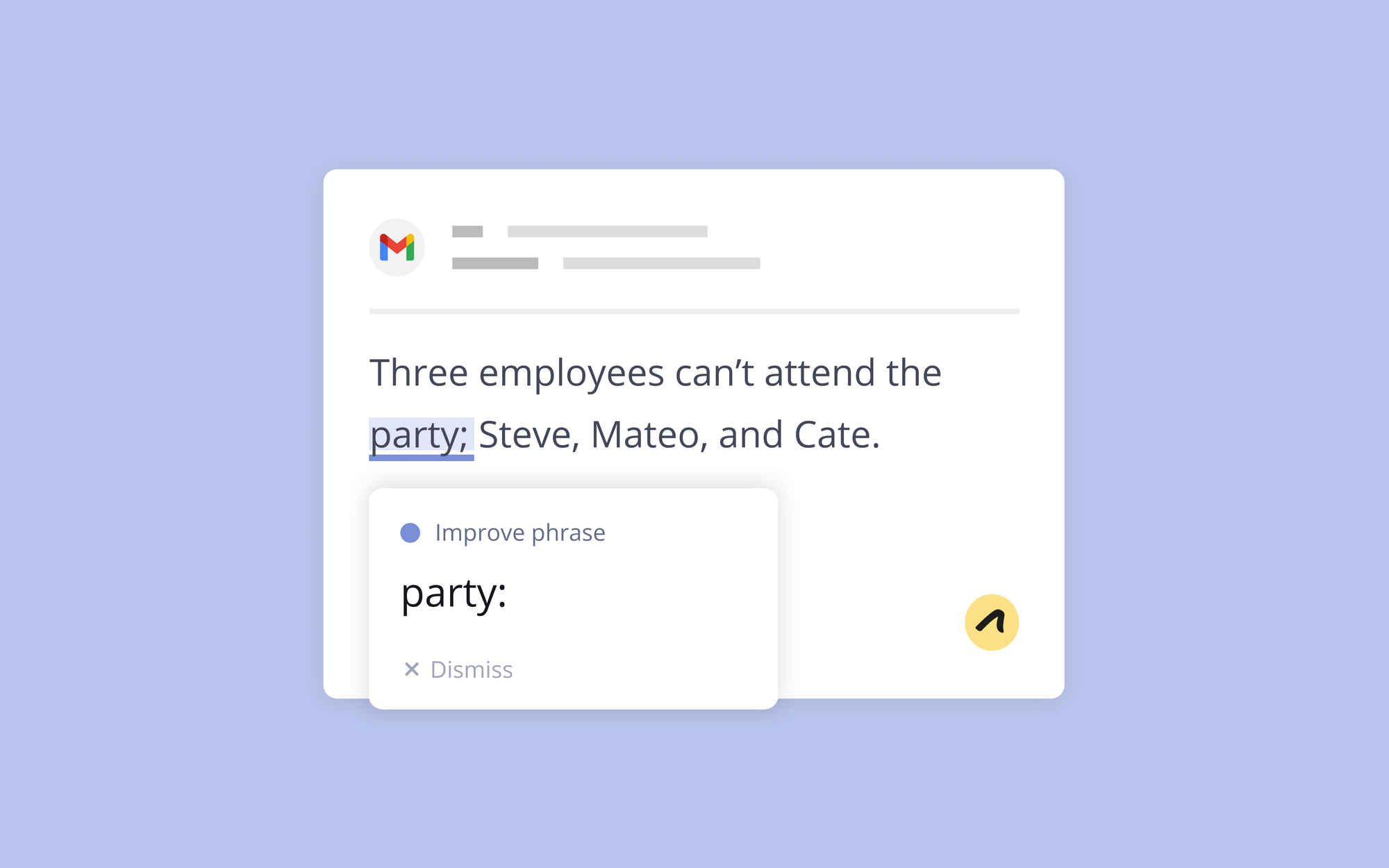Scared of semicolons? Here's how to use them correctly
Used sparingly and in the right context, the semicolon can add variation and nuance to your writing

The semicolon makes many people anxious. Not quite a comma, not quite a colon; some writers are so uncertain about its proper usage that they avoid it altogether.
Personally, I love them—they add variation and nuance to my writing. Used sparingly and in the right context, the semicolon can be a useful addition to both formal and informal writing. Let's look at what they actually are, and how they work.

The history of the semicolon
The semicolon is a relatively recent invention, as punctuation goes. It was invented in 1494 by the Italian printer and publisher Aldus Manutius. Until recently, it had no strictly defined function. It essentially acted like a half-way house between a comma and a colon—creating a pause that’s slightly longer than a comma, but not as final as a colon or a full stop.
Much of the uncertainty over how to use it probably stems from that fact. Indeed, writers have expressed discomfort about when and how to use them throughout its history. This reached its peak in 1837, when two University of Paris law professors were so opposed about a question of semicolon usage that they decided to settle the matter with a duel. (For a deep dive into the history of the semicolon, check out Cecelia Watson’s fascinating book, Semicolon.)
When should you use a semicolon?
Luckily, there’s no longer any need to debate semicolon usage at gunpoint—the rules are much clearer nowadays. There are two situations in which you would use a semicolon: to separate items in a complex list, and to connect two independent but closely related clauses. We’ll tackle the easiest usage first.
Semicolons in lists

Semicolons are used when punctuating lists, particularly when the list items are long, complicated, or include commas. In this case, the semicolon acts like a ‘super-comma’ to separate list items. For example:
The Brexit withdrawal agreement covers many areas: trade, tariffs, customs, and border checks; financial services, architecture, and accounting rules; travel requirements such as visas, pet passports, and health insurance; fishing quotas; legal structures, security issues, and data protection; and cross-border education schemes.
It doesn’t matter if the list is formatted as a paragraph (as above) or as a bullet point list—the semicolon serves the same purpose:
The Brexit withdrawal agreement covers many areas:
- trade, tariffs, customs, and border checks;
- financial services, architecture, and accounting rules;
- travel requirements such as visas, pet passports, and health insurance;
- fishing quotas;
- legal structures, security issues, and data protection; and
- cross-border education schemes.
Note some editorial style guides explicitly ask you not to use semicolons in bullet point lists.
Semicolons in sentences
The semicolon is used in a sentence to link two independent clauses that are closely related in thought. The trick here is that the clauses could stand as separate sentences if you wanted them to; the use of the semicolon is a stylistic decision. This is where most people get confused because semicolon use is a choice, not necessarily a hard and fast rule.
One of the most famous examples of good semicolon use is the opening line of Charles Dickens’ Great Expectations.
It was the best of times; it was the worst of times.
This sentence could also be reframed as:
It was the best of times. It was the worst of times.
This is grammatically correct, but the semicolon works better because the two clauses are so closely linked. The clauses could also be connected by a comma with a connecting word such as ‘and’ or ‘but’ (technically known as a coordinating conjunction).
It was the best of times, and it was the worst of times.
However, the semicolon also works better than the coordinating conjunction, because the slightly longer pause indicated by the semicolon makes the sentence sound (and therefore read) better. Note certain connecting words require a preceding semicolon, such as however, therefore, hence, consequently, nevertheless, and meanwhile (specifically, these are conjunctive adverbs).
Examples of semicolon use
Here are more examples of good semicolon use. The key here is that the clauses are closely linked—if not, you should use a full stop.
Heavy rain continues to fall at the airport; consequently, all flights have been grounded.
Hyperinflation makes it extremely difficult to keep up with soaring prices; a loaf of bread might cost $2 in the morning and $50 in the afternoon.
Study skills are integral to student success; a strong support network is also important.
When you shouldn’t use a semicolon

When one of the clauses is a fragment
If either linked clause is a fragment, not a full sentence, you shouldn’t use a semicolon—use a colon instead.
Incorrect: Using semicolons; what’s right and what’s wrong.
Correct: Using semicolons: what’s right and what’s wrong.
Incorrect: Australia is made up of eight states and territories; six states and two territories.
Correct: Australia is made up of eight states and territories: six states and two territories.
When the clauses are not closely related
If the two clauses stand alone as sentences and are not closely linked in thought or theme, they should be formatted as separate sentences. Before I use a semicolon, I always try them as separate sentences first to see which version reads better.
Incorrect: The cat stretched out on the carpet; the man typed on the computer.
Correct: The cat stretched out on the carpet. The man typed on the computer.
If you are overusing semicolons
Semicolons can be overused, giving your writing a staccato cadence, and disrupting reading flow. You can replace a semicolon with a coordinating conjunction in most circumstances to avert this.
Option 1 (semicolon): The seniors are permitted to leave the school grounds at lunchtime; the freshmen must remain on campus.
Option 2 (comma): The seniors are permitted to leave the school grounds at lunchtime, but the freshmen must remain on campus.
Benefits of semicolons
Once you understand the rules around semicolons, they can help add variation and nuance to your writing.
- They help improve clarity, especially where long lists are involved.
- They reduce the number of times you use words like ‘and’ and ‘but’, making your writing more economical.
- Used in combination with short sentences and joining commas, they allow you to vary the length of your sentences, making your writing more interesting and fluent.
- Finally, and most importantly, they enable you to add nuance to your writing, linking together related ideas or themes elegantly.
Sometimes this will involve a judgment call on your part whether a semicolon is the best option—and this is something that Outwrite’s suite of style suggestions and paraphrasing tools can help you with.

